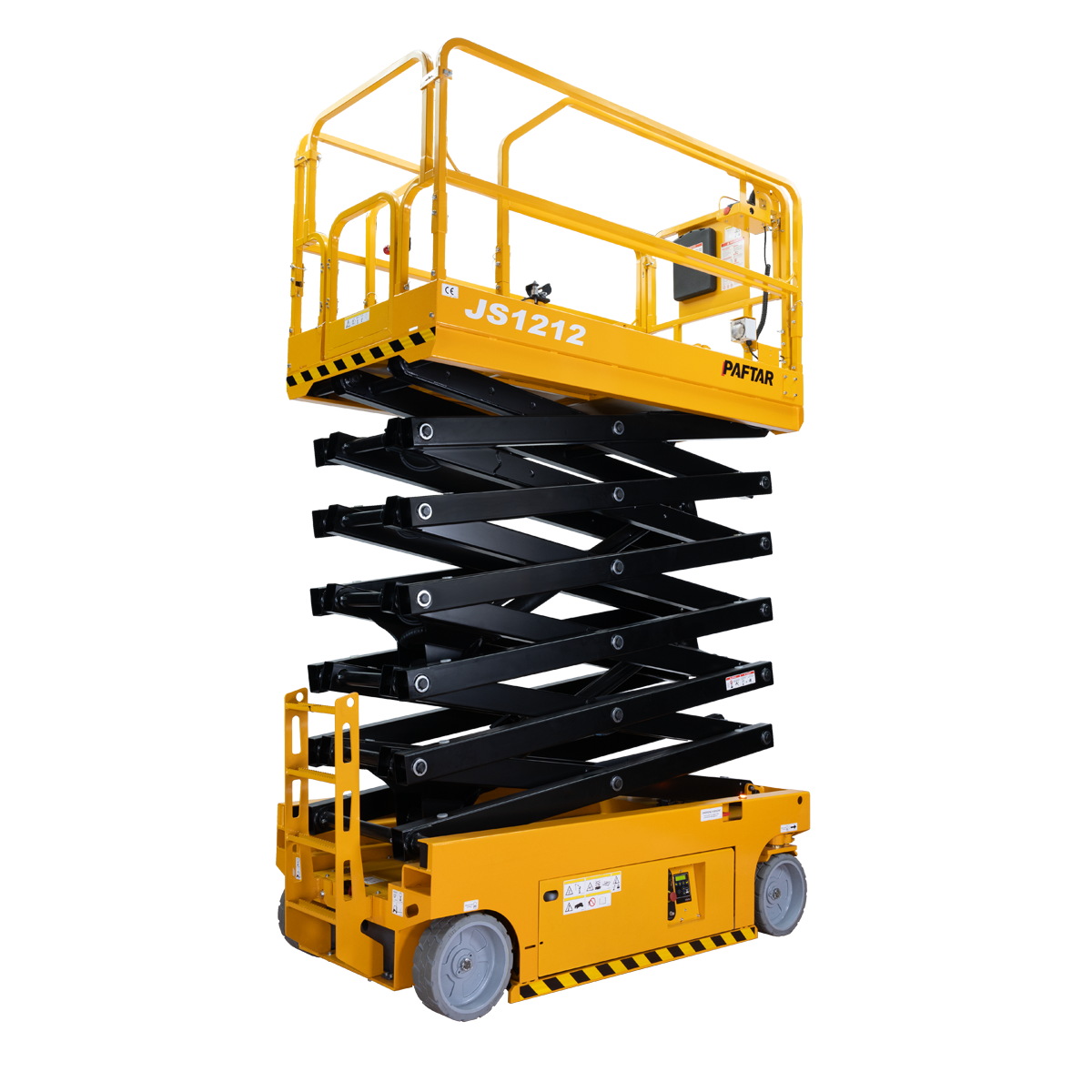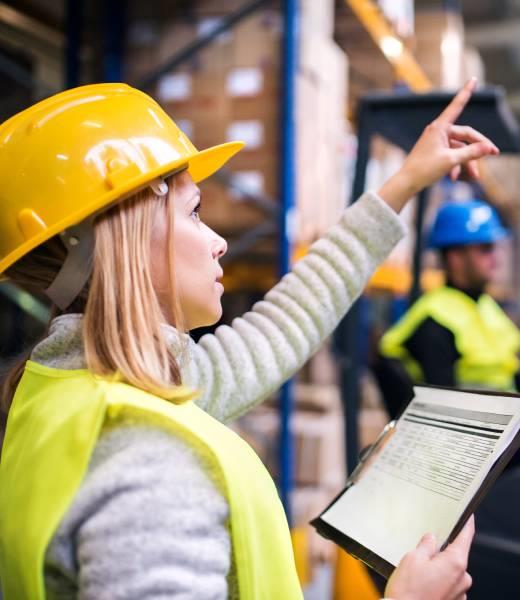MANLİFT

Basically, various mechanisms are used to adjust the height of a platform and move this platform to the desired location. The working principle of manlifts is as follows:
Motor and Power Supply:
Electric manlifts: These models are powered by electric motors and are especially preferred indoors, where quiet operation and low emission requirements are required.
Diesel engine manlifts: They are suitable for situations where powerful engines are needed, usually outdoors. Such manlifts can reach greater heights and be more effective in difficult terrain conditions.
Elevation Mechanism:
The platform on the manlift is raised depending on the hydraulic piston, telescopic arm or gear wheel system. The hydraulic system lifts the platform up by the movement of the oil under pressure.
The telescopic arm allows the platform to extend further.
The electrical and hydraulic systems are managed by buttons or levers controlled by the operator.
Platform and Controls:
The platform on manlifts is usually surrounded by protective guardrails for operator safety.
Controls allow the operator to perform operations such as raising, lowering, horizontal movement and rotation of the platform. These controls are usually located above the platform so that the operator can manage all operations while on the platform.
Stabilisation and Safety:
With manlifts, safety is important to ensure height and stability. Manlifts are often equipped with levelling systems that ensure proper positioning of the basket or platform.
Speed limitations, anti-impact systems and automatic stopping features can be found to ensure the safety of workers.
Terrain and Mobility:
Some models of manlifts can move with their wheels, while others can move on more difficult surfaces with a crawler system. Thus, they can be easily used especially on uneven ground such as construction sites.
Manlifts are equipment that allows reaching heights safely and efficiently, helping to complete jobs faster and more safely.
Manlifts have varying working heights depending on their different models and types. Height capacity is usually classified according to the type of manlift. Paftar manlifts have 2 models that can reach a height of 10 and 12 metres.
Yes, manlift operator training is mandatory. Within the scope of occupational health and safety laws, people who will use elevating platforms such as manlifts must be trained to prove their competence and use such equipment safely. Manlift operator training is usually provided by Ministry of National Education (MEB) approved institutions or authorised training centres.
Manlift operator safety is ensured by specific rules, equipment and training to prevent occupational accidents and make the working environment safe. Ensuring operator safety is the responsibility of both the employer and the operator.
1. Training and Competence
Operators must receive manlift operator training and certification from an authorised body. Training should cover the correct use of equipment, potential hazards and emergency procedures.
2. Use of Personal Protective Equipment (PPE) Safety Belt
Operators are required to use a safety belt fixed to the connection points on the manlift against the risk of falling. Hard hat, gloves and footwear: Head protection helmet, steel-toed shoes with non-slip soles and suitable work gloves should be used.
3. Regular Inspection of Equipment
A daily check of the lift truck must be carried out before start-up. These checks include hydraulic systems, tyres, brakes, safety locks and emergency stop buttons. Periodical maintenance and tests must be performed by authorised technical services.
4. Safety of the Working Environment
Ground Control: The manoeuvre truck should only be used on level and firm ground. Safety risks are increased on soft or sloping ground.
Weather Conditions: Work must not be performed in adverse weather conditions such as high winds, rain or snow.
Environmental Risks: Necessary precautions must be taken where there are power lines, confined spaces or heavy traffic.
5. Safety Equipment
Emergency Stop Button: The operator or auxiliary personnel can quickly stop the lift in case of emergency.
Slope Sensors: Safety sensors that prevent the lift from being used on unstable ground.
Overload Warning: Systems that automatically warn of loads exceeding the carrying capacity increase safety.
6. Compliance with Safety Instructions
The hoist must only be operated in accordance with the operating instructions and within the specified capacity limits.
Operator Concentration: Distractions should be avoided during work.
7. Emergency Procedures
Operators should be trained on how to behave in case of malfunctions or accidents. Rescue plans should be in place for operators trapped at height.
In addition to ensuring the safety of operators, these measures also support the smooth and efficient operation of the equipment.





